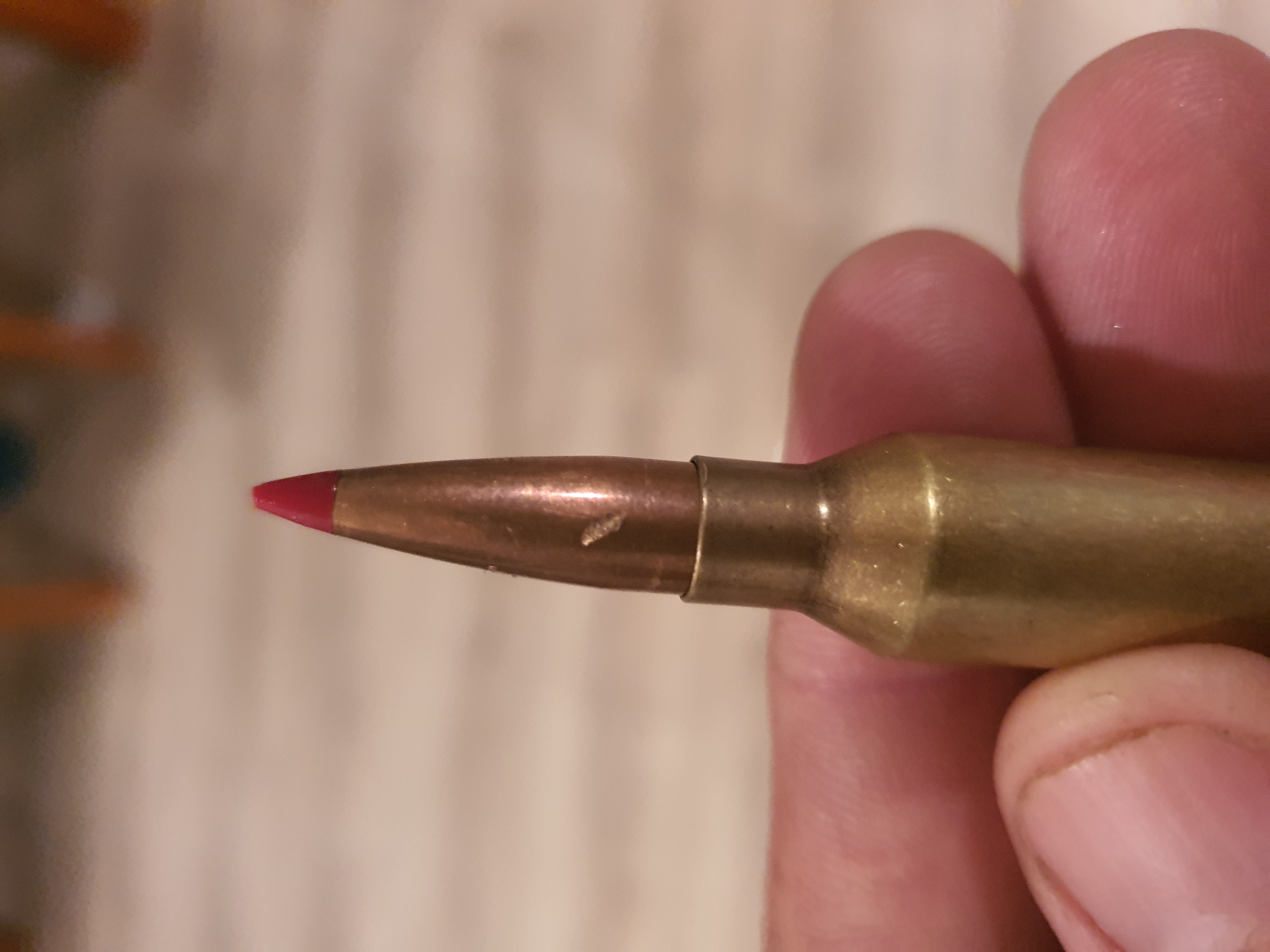When I FLR a belted case, wind the die back 3 or 4 turns, then resize and slowly wind forward and resize again until the bolt closes with slight resistance.
Welcome guest, is this your first visit? Create Account now to join.
Welcome to the NZ Hunting and Shooting Forums.
Search Forums
User Tag List
+ Reply to Thread
Results 61 to 71 of 71
Thread: Rounds jamming into lands
-
15-09-2021, 12:42 PM #61Member

- Join Date
- Apr 2012
- Location
- Kingcountry
- Posts
- 5,068
-
-
15-09-2021, 12:48 PM #62Member

- Join Date
- Feb 2015
- Location
- BUsh
- Posts
- 222
It appears the first pic posted has the projectile seated longer than subsequent pics so probably there is no issue with the shorter ones being too long. Best to do a process of elimination by first stripping the bolt of all load and chambering loaded rounds without using the magazine......find the tight ones and pull the projectiles, then check the empty case for tightness. If it is not tight then it can only be the projectile being too tight in the freebore from fouling, binding on the neck due to carbon or debris or some inconsistency in the projectile being damaged.
If the case is tight it could be many other factors such as trim length too long, case length at shoulder or improper full length sizing as many have already suggested here. You need comparators to check the difference between the tight and not so tight.......hope you get it sorted.....it can be frustrating......!
-
15-09-2021, 01:16 PM #63Member

- Join Date
- Jan 2018
- Location
- Otorohanga
- Posts
- 121
Is the cut mark on my first pic what you are referring to? Or something different again
Rounds were all single fed. I sorted through all the brass by length and took all the trimmers out and used the brass that havnt needed trimming(anything over 1 thou).
So I've gathered that the main suspect is the Neck sizing stretching the neck and shoulder but I'm concerned what the cut is on the pill in my first photo as some have stated it's definitely not from the lands. I know that it lefr the same cut on the couple of rounds that were tight that I shot right before.

-
15-09-2021, 04:45 PM #64Member

- Join Date
- Dec 2019
- Location
- Okawa Hawkes Bay
- Posts
- 3,200
Greetings again kayneb,
I saved the image and zoomed in to get a better look. There are no scrape marks on the forward side of the gouge. This and the fact you had other rounds with this mark leads me to believe that the gouge did not happen in the chamber. My guess would be that the ejector, Plunger type I assume, drove the cartridge into a rough spot inside the action. A careful feel around inside the front of the ejection port may turn something up. A rough edge would do it.
Regards Grandpamac.
-
15-09-2021, 05:06 PM #65Member

- Join Date
- May 2012
- Location
- Sydney
- Posts
- 1,825
Similar Threads
-
Bird lands on rabbit
By video hunter in forum Varminting and Small Game HuntingReplies: 5Last Post: 27-11-2020, 12:58 AM -
Tikka t3x 6.5 x 55 maximum oal just touching the lands?
By Sr5dan in forum Reloading and BallisticsReplies: 9Last Post: 26-10-2018, 08:47 AM -
need some help with new mossberg 590a1 jamming
By greatday in forum Firearms, Optics and AccessoriesReplies: 2Last Post: 08-07-2014, 11:53 PM -
.223 Rounds
By James J. in forum Firearms, Optics and AccessoriesReplies: 52Last Post: 20-03-2014, 07:49 PM
Tags for this Thread
Welcome to NZ Hunting and Shooting Forums! We see you're new here, or arn't logged in. Create an account, and Login for full access including our FREE BUY and SELL section Register NOW!!





 98Likes
98Likes LinkBack URL
LinkBack URL About LinkBacks
About LinkBacks



 Reply With Quote
Reply With Quote



Bookmarks